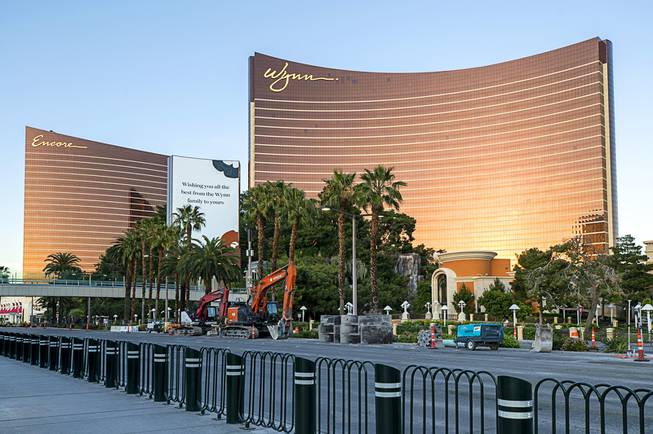Wednesday, Aug. 5, 2020 | 9:52 a.m.
With fewer people flying to Las Vegas because of the coronavirus outbreak, Wynn Resorts, which operates the Wynn Las Vegas and Encore on the Strip, has depended on regional drive-in customers to fill the void.
But the number of visitors from neighboring stateshas dwindled after the virus spiked in California and Arizona, a company executive said.
During a quarterly earnings call Tuesday, Wynn CEO Matt Maddox talked about the challenges the company has faced during the worst public health crisis to hit America in a century.
After Gov. Steve Sisolak ordered casinos shut down in mid-March to help control the spread of the virus, Wynn reopened its Las Vegas resorts on June 4.
“There was some pent-up demand as we opened in June, in particular from California,” Maddox said. “We were receiving roughly 4,000 reservations per day... As the virus began to spike in our key drive-in markets in California and Arizona, we saw a downtick in reservations — roughly about 25% — after the Fourth of July.”
For the three-month period that ended June 30, Wynn’s Las Vegas properties pulled in about $65 million in operating revenues, an 86% decrease from $464 million in the second quarter of 2019.
Wynn and Encore are seeing occupancy rates close to 55% on weekends and in the 30% range during the week, Maddox said.
“It’s certainly a very different business model. We’re effectively a super-regional casino right now,” Maddox said. “Without the convention base, the nightclub crowd, the large shows, we’re really focused on promos and offers. We’re doing more things to try to get people here more often, basically from California and Arizona.”
Before the pandemic, the nongaming segment made up about 65 percent of Wynn’s revenue, and that business is down by about two-thirds, Maddox said.
Companywide, Wynn Resorts reported revenues of just under $86 million during the second quarter. That’s a 95% dip from the same period in 2019.

